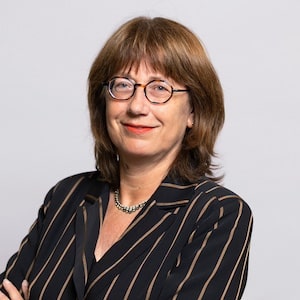AI innovation can save lives in ICU
Intensive-care medicine is a high-stakes field. Multiple decisions that could literally mean the difference between life and death are made every day. One of those decisions is whether a patient is well enough to be discharged from the ICU. In a world-first, doctors at Amsterdam UMC are now being supported in that decision by artificial intelligence. We talked to Wouter Kroese of Amsterdam-based software developer Pacmed and Patrick Thoral, intensivist at UMC, about the collaboration that led to this pioneering innovation.
Making the best choices
Discharging a patient from the Intensive Care Unit is risky: their condition may deteriorate and they may need to return to the ICU. If this happens there is a greater chance of death than if the patient had stayed in the ICU. But keeping patients in intensive care for longer than needed is also undesirable: it blocks scarce beds needed for other cases and unnecessarily long stays in the ICU are unhealthy and traumatising for patients.
The newly launched software, called Pacmed Critical, compares the information from an ICU patient with the data of almost 25,000 earlier ICU patients. Based on this, the software makes a prediction of the combined probability of readmission and undesired death within a week after being discharged. It also lists the factors on which that prediction is based and shows how that prediction changes with time. It’s the result of a long-term collaboration between Thoral, his fellow UMC intensivist Paul Elbers and Amsterdam-based software developer Pacmed.
Shared vision of data science
Discussing the company’s partnership with Amsterdam UMC, Pacmed co-founder & co-CEO Kroese says that Pacmed saw the potential of using data to improve clinical practice early on. “And Amsterdam UMC was one of the very first to leverage the enormous amounts of data being used on the ICU.” In its early days, Pacmed began working in primary care then expanded to ICU solutions after talking to Thoral and Elbers five or six years ago. The company also expanded into other healthcare areas but a year ago decided to fully focus on ICU. “We feel such a good connection with Amsterdam UMC,” says Kroese, “and it was really inspirational for us to talk with doctors who were so knowledgeable about what you can do with data, and who are in a field where there is so much data. It did not feel commercial at all, we were really focused on making a change.”
Thoral explains that UMC was interested in exploring ways to make optimal use of its ICU data and had been in touch with large corporations such as Microsoft and IBM to discuss opportunities, but there hadn’t been much progress. “What we found is that representatives of those organisation were not at all knowledgeable of what is required to actually do something meaningful with that data,” says Thoral. And, he continues, “it was really refreshing when talking to the guys from Pacmed that they were knowledgeable about the medical aspects, but also about the data itself.”
Perseverance to overcome hurdles
Pacmed Critical was in development for five years. When asked what made the breakthrough possible, Thoral replies simply: perseverance. “In the beginning, most of us didn’t realise what we had to tackle before [the software] could actually be used in practice: the technical as well as the legal and regulatory hurdles. But both parties knew how useful it could be and persevered with talking to everybody, within the hospital and outside, to get to a finished product, which might actually change patient outcomes.” Kroese agrees, adding that ICU care is “by far the most feasible and impactful area of healthcare” for decision support software based on clinical data.
Creating the Pacmed Critical algorithm – what Kroese describes as the “core intelligence of the software” – was the starting point. It was then validated with data from and user tests at Amsterdam UMC and other hospitals. Research is continuing, says Thoral. “First, we were asking doctors to give their predictions up front, to see how they matched the predictions of the model. Now we are in the phase where they are actually using the software to see how it supports their decision, we’re already seeing that it helps doctors.”

Wouter Kroese
AI-sparked discussions
Thoral says the process is interesting from both a technical and a sociological perspective, because medical professionals “are forced to use the data when deciding what to do with a specific patient, and that leads to interaction and discussions, especially if the predictions of the physicians differ from the software.” He sees those discussions as a positive and logical part of how an ICU operates. “We have always discussed things with our colleagues, with nurses, with other healthcare professionals, and now we are letting AI spark further discussion. I think that’s a good thing, because it requires the whole team to re-evaluate matters if the software sees something differently, and sometimes we change our opinion.”
Clear, specific guidelines
Data-sharing across organisations is key to the development of AI software such as Pacmed Critical. Thoral believes that a great deal is ethically possible within GDPR regulations, but that hospitals need clearer guidelines. “There’s currently no standardised way of knowing you are meeting the requirements. You have discussions with your privacy officers and your ethical committees and of course that’s good, that needs to be done, but it costs time. And especially in the beginning, there was not much guidance on best practices to share data. The problem is not the law itself, but the difficulty in getting everybody aligned on how to interpret the law.”
The Dutch healthcare system is taking steps to encourage data-sharing, as are other European institutions, but there are hurdles. Some organisations are hesitant to take part – “they see it as ‘giving away’ your data,” says Thoral. “Data you could use as an institution to perform research yourself is being given away to other institutions. And sharing data requires resources, both human and financial, and not every institution has the people needed to make it happen.”

Patrick Thoral
Building trust
Kroese is equally convinced of the importance of data-sharing for innovation in healthcare, but also sounds a warning note. “I see many ethical risks in algorithms being developed without having a clear understanding of how the data came to be, and without being sure that it’s processed the right way. And I think the necessary professional technical expertise is sometimes missing, especially when making products out of data in hospitals themselves. It’s very important that you clearly understand what the clinical context was and where there might be mistakes or holes in the data.” Data-sharing shouldn’t just mean throwing open the gates, says Kroese. “There are risks involved in unethical applications or applications that are not safe and valid. I think strict requirements are needed to build the trust that you handle the data well, both technically and from a safety perspective.”
Know the context
For any smart health startups looking to collaborate with an established medical institution, Kroese emphasises the need for a crystal-clear focus on what you are trying to achieve, and an awareness of all the ‘non-AI’ elements involved. Thoral points out that one of the problems for startups is that many hospital software systems are proprietary, so the only way to access the information needed is by talking to hospital staff. And that means knowledge of the clinical context is essential. “I’ve heard about a lot of companies who had interesting ideas,” he says, “but when you look closely, they’re not feasible because of the way we work. Something might work in the lab situation, but not in clinical practice – and you can’t expect people to do their work completely differently in order to leverage an AI model.”
Winning friends and influencing people
A strong partnership with medical professionals is not only important in terms of understanding the clinical context, says Kroese, but also to make the move towards implementation. “You need so many stakeholders on so many levels in the hospital. It’s really helpful to have pioneers who help you navigate through this complex medical field.” According to Kroese, there are a couple of simple, but essential things to remember when nurturing your partnerships. “Be very honest and don’t take shortcuts. When we started, our marketing was doing the opposite of what most companies would do. We weren’t saying, ‘this is the future of everything. And this is so cool. And we can do this quickly and it’s gonna be awesome’. We were quite honest that AI technology has got a long way to go, and your algorithms won’t be perfect from the start. And I think that helped us greatly in building the trust and the position that we now have.”
Thoral agrees. “You should be able to talk to doctors and be honest about what you expect, so people don’t get wrong ideas of what is feasible. Otherwise, it will backfire on you if something turns out not to be possible… it’s fine to be optimistic and to show your idea’s potential, but it must have some sort of realistic base in what you know about hospitals and how we collect the data.”

Stimulating interdisciplinarity
Thoral and Kroese agree that the interdisciplinary approach stimulated within the Smart Health Amsterdam ecosystem is an important contributor to collaboration and innovation in life sciences and health. “Companies and their partners should be able to focus on figuring out the AI, solving the clinical problem and using the data,” says Kroese, “but all the other things around this are actually the tough part, and many companies or projects will bump into the same issues. So sharing knowledge and best practices can help speed things up greatly.” Connecting different fields of expertise – “doctors, physicians, nurses with data scientists” – is crucial, adds Thoral. “It’s important to align expectations. What do you need from both sides to get something meaningful out of out of your data? Making these connections will help expedite the development of AI models and get them implemented.”
Find about more about Pacmed’s AI -driven innovations in healthcare. Amsterdam UMC is one of Smart Health Amsterdam’s partners.
Smart Health Amsterdam is the network for data- and AI-driven innovation in Amsterdam’s life sciences and health sector. We invite you to join the community and receive regular updates.
13 October 2022
Read more about
Contact us
Want to keep up to date?
Get the best regional news and events (in Dutch) via the Board Update newsletter
Share this news
Want to keep informed?
Follow us daily on LinkedIn and sign up for the Board Update newsletter.
Read more
- What is the Amsterdam Metropolitan Area’s position on critical raw materials? ...
- Preparations for the National Zorginnovatieprijs 2026 by Zorginnovatie.nl are underway, and registration ...




